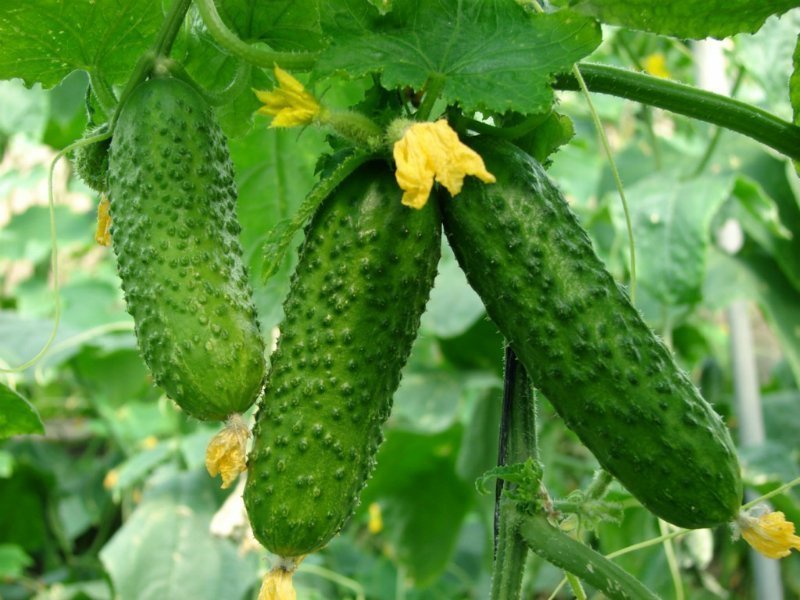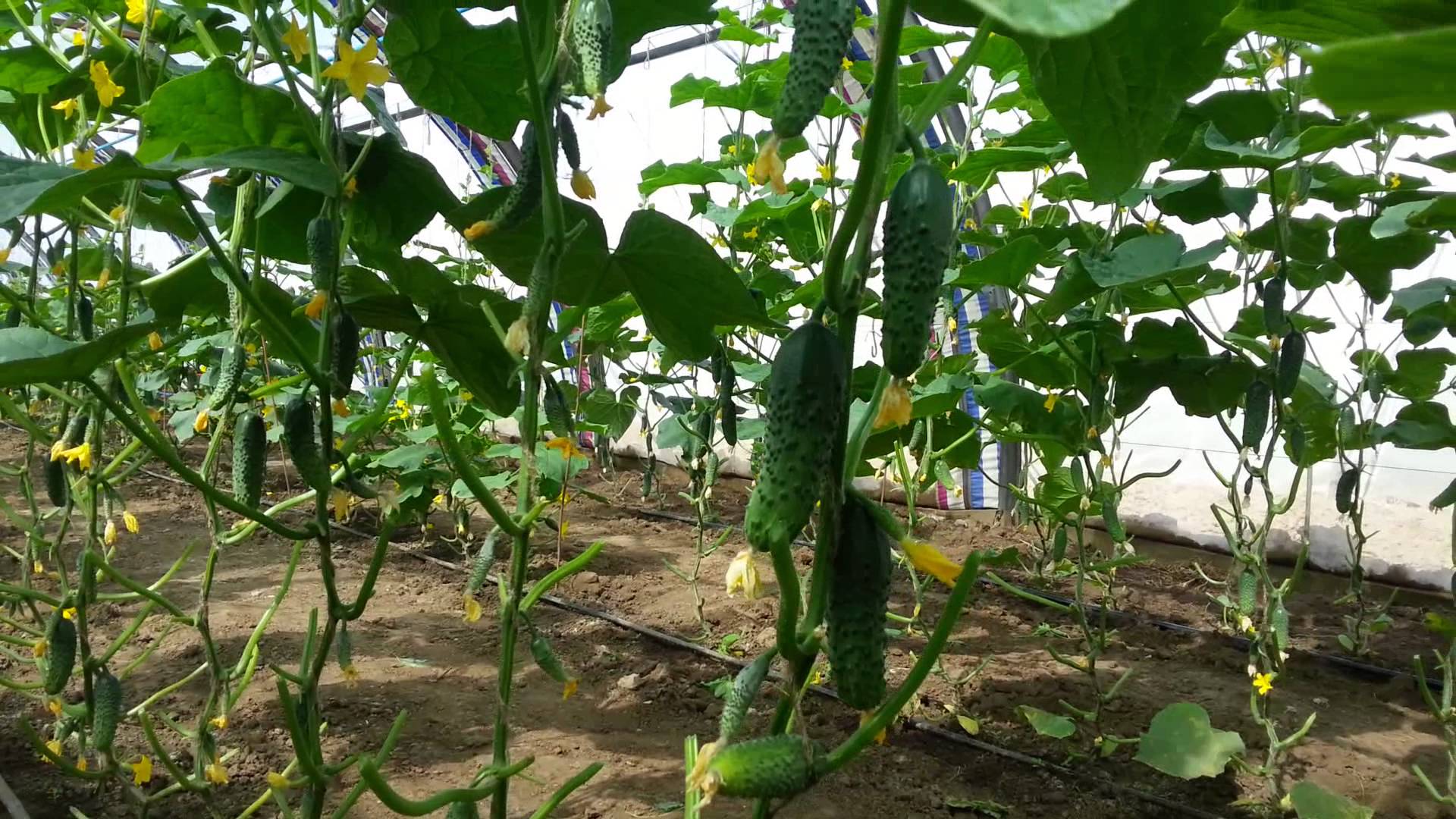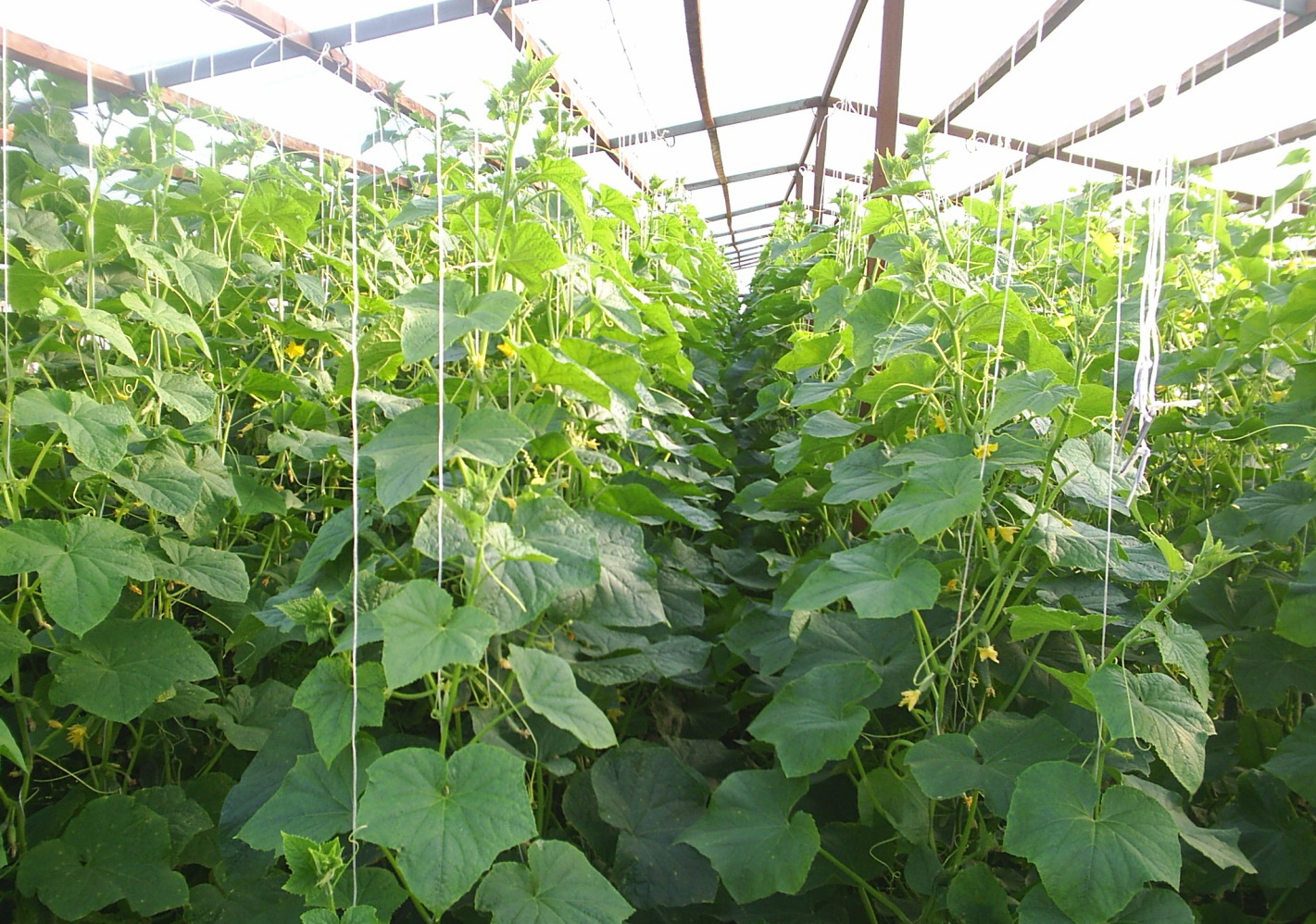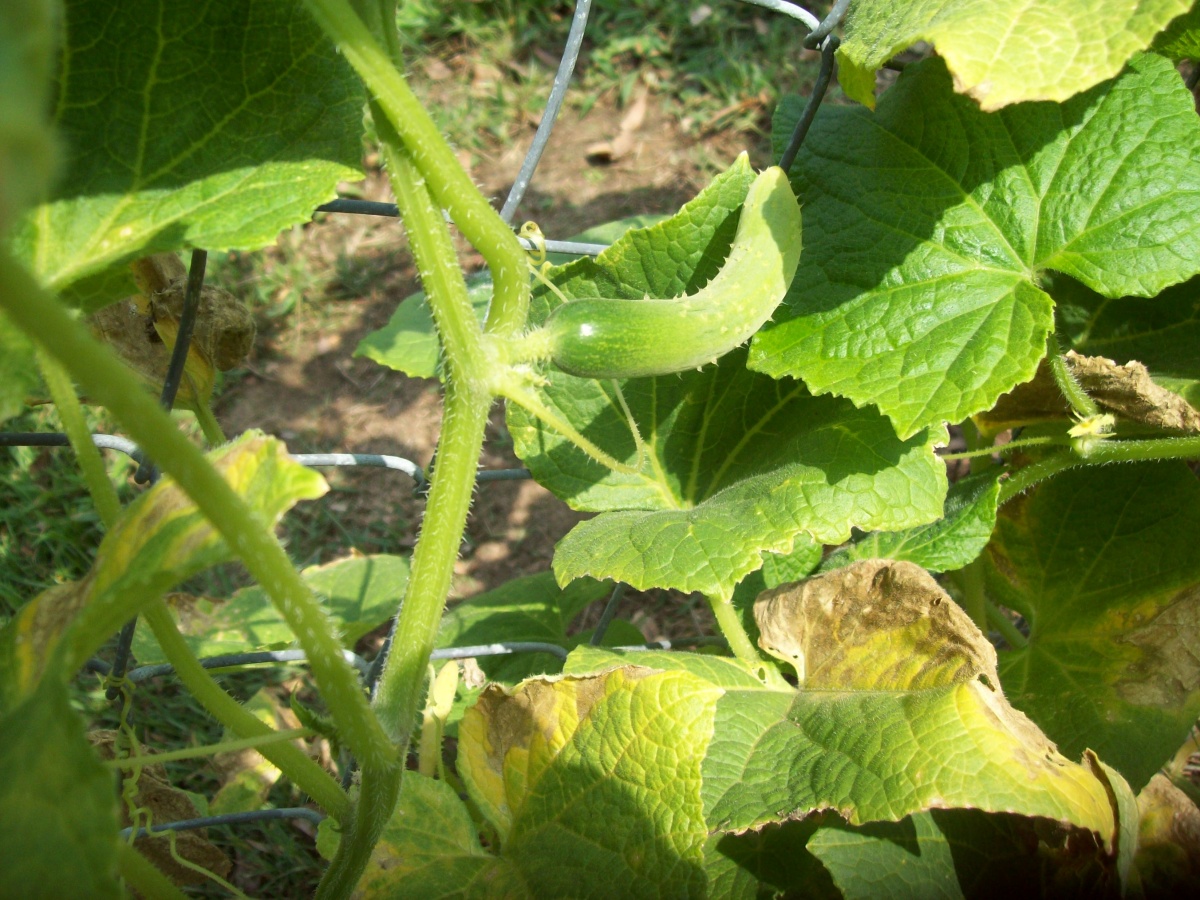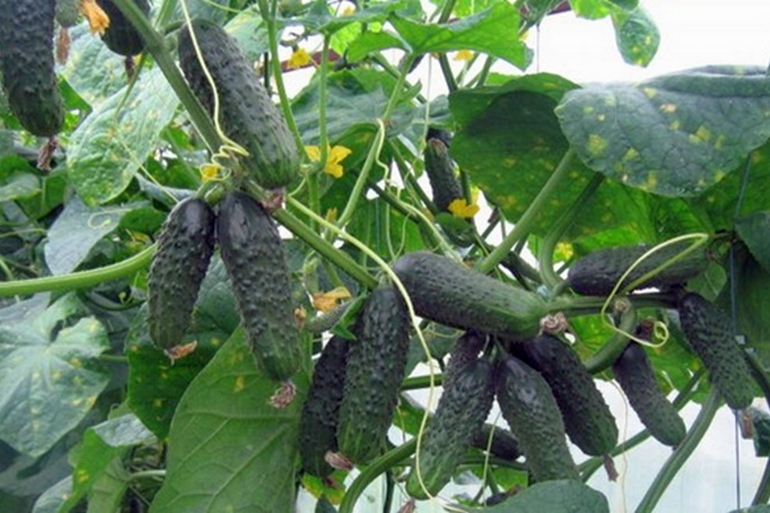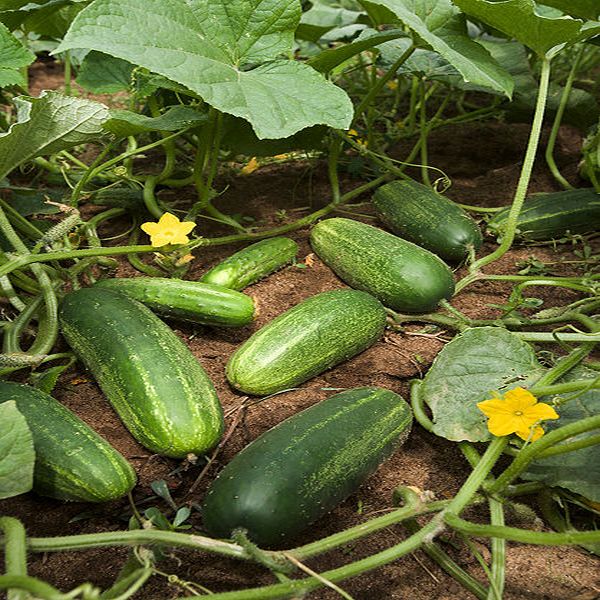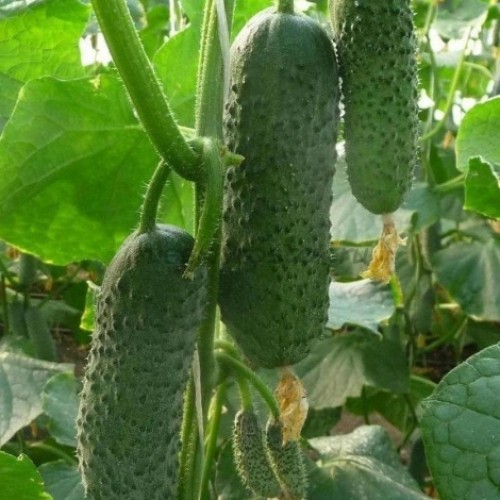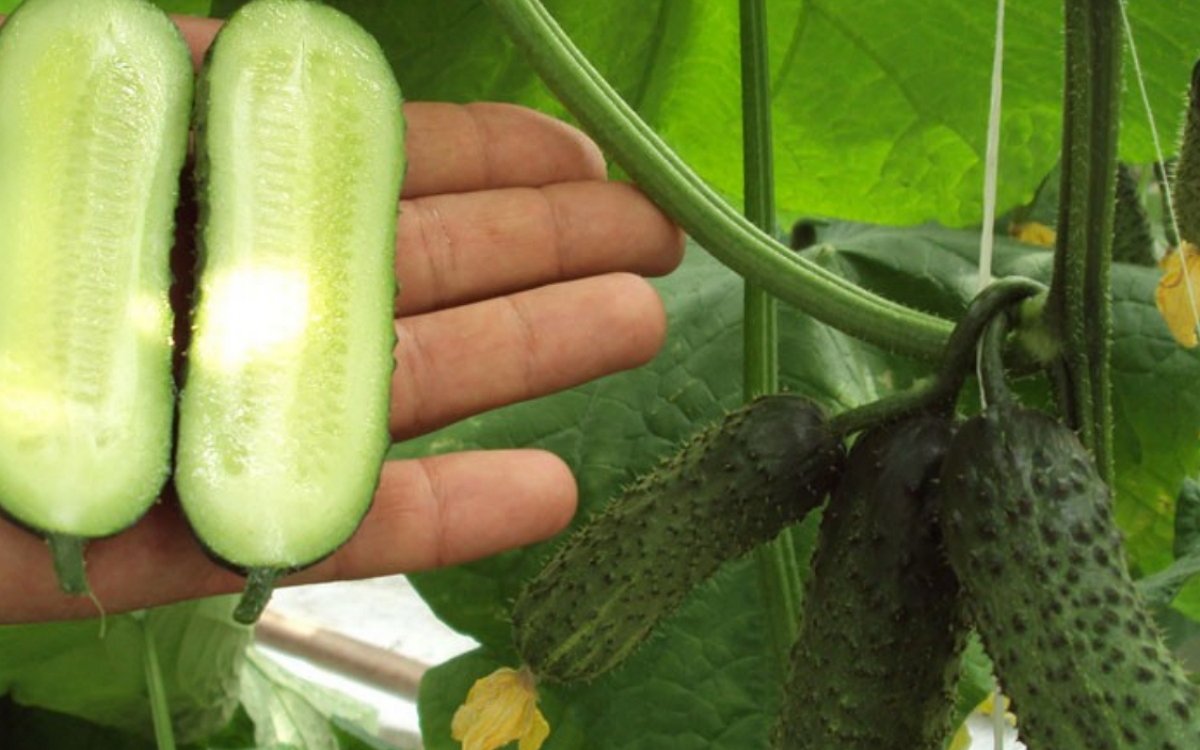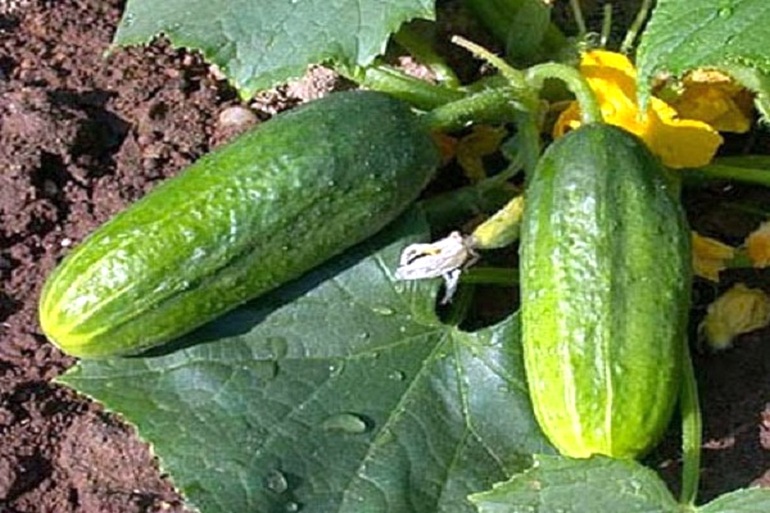Content:
An early ripening hybrid variety - the cucumber Artist - bred in Holland. Relatively recently, in 2010, it was included in the State Register of Russia. According to gardeners' reviews, the species has practically no drawbacks, therefore, its cultivation is recommended everywhere.
Characteristics of cucumber varieties Artist
When buying seeds in specialized stores, you will notice a special mark on the bag, in this case - a cucumber variety Artist F1.
However, parthenocarpic does not mean self-pollinating at all. Self-pollinated plants have flowers of two types - with pistils (males) and with stamens (females); parthenocarpic flowers have only female flowers, with stamens. There are no developed seeds in their ripe fruits.
Pros of a parthenocarpic hybrid:
- early ripening;
- bountiful harvest;
- the fruit has a quality taste (no bitterness);
- the yield is stable;
- immunity to fungal diseases.
Description of the variety
Artist cucumbers ripen equally well in greenhouses and in the open field. The plant is a powerful whip with large green leaves, with a branched root system.
The first cucumbers appear in the interval between 38 and 50 days from the day the seedlings are planted in the ground.
A cylindrical cucumber of this variety weighs about 100 grams, has multiple tubercles, thorns and white fluff. On average, its diameter is three times less than its length. The skin of the fruit is dense, of medium thickness, and the flesh is rich in taste, sweet.
With proper care of the crop, the yield will be about 8-9 kg per square meter.
The hybrid is equally good in salting, in conservation, as well as for fresh consumption.
Advantages
This variety has undeniable advantages:
- good resistance to powdery mildew, cladosporia (mottling) and cucumber mosaic;
- high and long-term productivity;
- versatility in use;
- good safety during transportation;
- marketable condition.
disadvantages
The need to maintain high soil fertility, but this is more likely not a drawback, but a care requirement.
Growing seedlings
In the middle lane at the end of April, it is time to start growing planting material.
It is customary to start the process with the selection of quality seeds. Usually they are placed in a bowl of water, all that have floated to the surface are removed - they turn out to be empty or damaged.
High-quality seeds are kept for 15-20 minutes in a weak solution of potassium permanganate (this is how they get rid of pathogens on the surface of the seed).
The disinfected seeds are then placed in a growth stimulant solution (Epin). To accelerate germination and relieve stress, it is enough to keep the seeds in it for about 4-5 hours at room temperature, not in the sun.
It's time to start hardening. Wet seeds, folded in a cloth bag, are first put in the refrigerator for 10-12 hours, and then left at room temperature. Repeat the procedure three times.
The hardened seeds are laid out on a highly moistened gauze, folded in several layers.
The soil requires special preparation. It should be steamed and highly moisturized. Carefully, with the help of tweezers, each hatched seed is placed in the center of the container, without deepening!
Pots with future seedlings are placed in a sunlit place and monitored for humidity.
Ground landing rules
It is customary to take care of the quality of soil for next year's harvest in the fall. It doesn't matter if it is supposed to plant seedlings in open ground or in a greenhouse.
In the fall, the soil should be deeply dug, be loose and neutral, in extreme cases, slightly acidic. Ash or hydrated lime is used for deoxidation. Then mineral and organic fertilizers are applied.
In the spring, re-digging is carried out, the top layer is mixed with humus.
Seedlings are planted in the evening. Each bush should have 4 normal leaves, no more, since the overgrown seedlings will be weaker and less adaptable to a new place, which will subsequently affect the harvest.
Pots with seedlings are evenly distributed in the garden, the distance between them should be 40-50 cm. In the future, this will contribute to normal ventilation, which, in turn, will protect against diseases.
Care
It has been proven in practice that cucumbers grow best on trellises. They provide convenience for watering, weeding, loosening and harvesting.
In the process of growth, one should try to form one trunk, breaking off the whiskers and ovaries near the lower leaves.
Watering is necessary frequent, in small portions, with warm water. The vegetable is very sensitive to watering with organic fertilizer. Will thank the owner a hundredfold!
The main nutrition for future growth was laid during the preparation of the soil (autumn and spring), but additional feeding is also required during the ripening period. Three or four additional fertilizing with mineral or organic fertilizers per season is enough.
Several examples of organic and mineral dressings, they need to be alternated:
- Organic - watering the roots with a manure solution or grass infusion. Mineral - urea (one large spoon) and superphosphate (50 grams) in a bucket of water.
- Organic - a cup of ash in a bucket of water (root top dressing). Mineral - superphosphate, nitrate - ammonium and potassium - in a bucket of water (root dressing).
- Organic - An herb infusion or diluted mullein in a bucket of water. Mineral - 40 grams of urea per bucket of water.
Harvesting
Early morning is the best time to harvest ripe fruits. Since the variety is very productive, this has to be done daily. In addition, overloading the lashes with overripe cucumbers is harmful to the plant, this reduces the yield, and the overgrown fruits also lose their taste.
Ripe vegetables are removed in a cold place - in the refrigerator or cellar, where they are perfectly preserved, laid out in baskets.
Disease prevention
To protect plantings from powdery mildew or other fungal diseases, it is recommended to process the plants from time to time. Experienced gardeners have developed this technology for a long time.
There are a lot of diseases: powdery mildew, downy mildew, gray rot, white rot (sclerotinia), olive spot (cladosporia), copperhead (anthracnose) - all of these diseases are fungal in nature, as well as yellowing of the leaves. It is associated with a lack of potassium in the plant.
Proper care will help avoid most of the troubles, but if trouble has overtaken, you will have to take urgent measures.
If signs of powdery mildew are found, immediately spray the plant with Topaz solution. There are also folk methods of struggle, a description of some of them:
- soda and laundry soap are diluted in equal proportions on a bucket of water.The resulting mixture is sprayed on the bushes twice a week;
- spraying with mullein infusion (there is a mullein on sale in liquid form). It must be mixed with water. The procedure can be performed several times a week.
If the plant is infected with gray mold:
- remove all damaged plant parts and fruits;
- treat with fungicides (Bayleton, Rovral).
With signs of sclerotinia:
- cut off the damaged parts, with extensive damage to the plant, you will have to part with it;
- pour the cucumbers with a mixture of urea with copper sulfate, diluted in water.
Fight against anthracnose:
- spraying with Bordeaux liquid;
- treat diseased parts with copper sulfate, and then sprinkle them with charcoal or lime.
When the leaves turn yellow:
- infusion of ash in the form of a spray solution;
- feeding plants with onion broth (insist a few tablespoons of onion husks in a bucket of warm water).
General recommendations for disease prevention:
- Compliance with crop rotation, that is, you cannot plant a crop in one place for two years in a row, moreover, the soil heals only after four years!
- Do not leave plant residues on the beds.
- Disinfect after harvest.
- Watering should be done only with warm water.
- Maintain the temperature in the greenhouse, remembering to close the door at night.
Choosing a cucumber variety Artist for planting, the gardener guarantees himself a high yield and a minimum of hassle during the growing season and harvesting.
Specialists-breeders have tried to create a hybrid adapted to various climatic conditions, able to withstand the most common fungal diseases, and giving an early harvest.
Practice shows that everyone who is engaged in breeding of this particular species is satisfied with the results of the invested labor.
